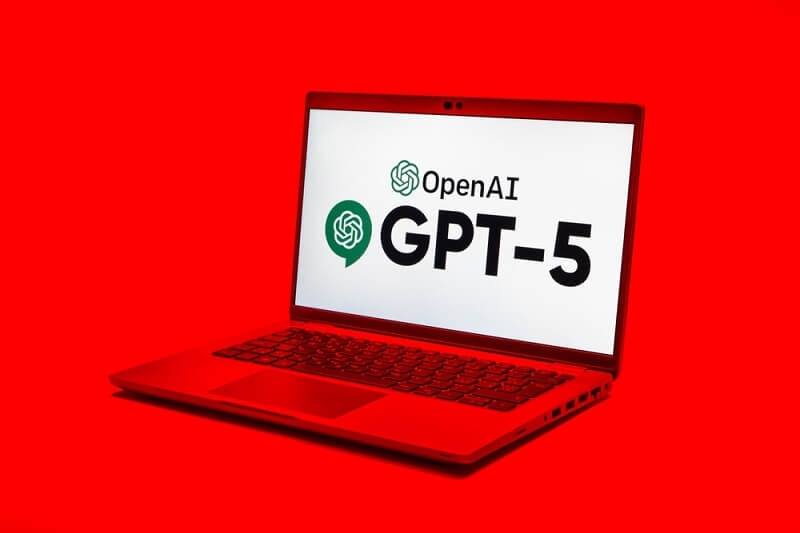Discover Is the AI Hype Around Chat GPT-5 Already Fading

AI gets a lot of buzz, but 2025 seems to differ. The unveiling of the OpenAI GPT-5 has caused a huge debate across the Internet, as people are hailing its new capabilities, and others are doubting whether the AI boom of 2025 is real. The question for many is, is Chat GPT-5 the game changer, or is this the same AI overpromise vs performance sort of situation?. This blog examines GPT-5 abilities in more detail and their competence with GPT-4, and whether the hype should be as great as it is. We will simplify it on a basic level, so that you can make your judgment.
Understanding GPT 5 in simple terms
To get down to the discussion, it is important to just know what GPT-5 is. The AI technologies that recognize and create human-like text are called GPT, which is an abbreviation that transfers its meaning to "Generative Pre-trained Transformer." Using Chat GPT-5, OpenAI says it was able to develop the most sophisticated language model to date.
How GPT-5 works in everyday use
The GPT-5 will read some text, context-understand, and provide the right and natural response. As an example, you can write articles, answer questions, create stores, or even assist in coding. In a typical conversation with anyone, it is human-like than any of the previous forms of GPT-5.
Why GPT-5 feels different from GPT-4
When you compare GPT-5 vs GPT-4, you notice a few big changes. GPT-5 has improved memory, meaning it can remember earlier parts of a conversation for longer.
GPT 5 capabilities that stand out
Each new version of AI is claimed to have something new to offer, so what is new with GPT-5? To make it simpler.
Smarter conversations
Among the most striking GPT-5 is the ability to have a better conversational flow. It errs less randomly and can provide more contextually aware responses, which is a big thing when people use it either at work or in study.
Better at complex tasks
GPT-5 is capable of taking layered questions with multiple instances of reasoning. It can give a summary of a book, evaluate the plot, and propose questions that could be discussed during the conversation, and not forgetting a single thing.
More natural writing style
Where GPT-4 was already sufficient to write readable text, GPT-5 makes it seem even more like it was written by a real human being. The tone, rhythm, and overall arrangement is more smoother and thus more suitable for blogs, emails, and even creative works.
Comparing GPT 5 vs GPT 4

With the launch of GPT-5, people raise endless arguments concerning the refinements between it and GPT-4. The following are some of the areas in which they are different.
Memory and context
GPT-4 would limit the memories of previous steps of conversation to a small number of memories. GPT-5 expands that memory to a level many times, and it becomes possible to talk longer and to talk more meaningfully.
Accuracy in answers
Speaking of the factual accuracy, GPT-5 enjoys a higher success rate, but it is not flawless yet. It is also capable of coming up with incorrect data when the question is ambiguous or when it gets the context wrong.
Understanding tone and emotion
Emotional awareness is one of the underpromised advances in GPT-5. It can even read the unspoken messages in what you write and duplicate that tone in your words, amiable, formal, understanding, or even humorous.
Is the AI hype 2025 justified
Artificial intelligence in 2025 appears everywhere: news, technology-related conferences, and normal meetings. However, other professionals think that the hype of ChatGPT-5 is more of a marketing ploy than reality.
What the hype gets right
Nor is the hype misplaced altogether. It is no secret that GPT-5 is much more developed than the old models.
Where the hype may be too much
However, there’s a gap between marketing promises and actual user experience. AI models like GPT-5 still have limitations.
AI overpromises vs performance.
The discussion about AI overpromising vs performance is not new, but it is more important than ever with GPT-5.
Overpromise in AI marketing.
AI companies often promote their models as if they can replace entire industries overnight. While OpenAI GPT-5 launch ads suggest groundbreaking abilities, the reality is that it’s still just a tool — powerful, but not magic.
Real performance in day-to-day tasks
In real-world usage, GPT-5 is excellent for brainstorming, summarizing, and automating repetitive writing. But it cannot replace critical thinking or expert human judgment.
Real-world uses of GPT-5
It’s not all about the hype — GPT-5 is genuinely useful in many everyday and professional settings.
Education and learning
Students use GPT-5 to understand difficult topics in simple terms, create study guides, and even practice writing essays. It’s like having a patient tutor available 24/7.
Business and marketing
For businesses, GPT-5 helps write marketing copy, answer customer queries, and draft proposals. It speeds up tasks without replacing creative decision-making.
Where GPT-5 still struggles
Despite the praise, GPT-5 is not perfect. Knowing its weaknesses helps manage expectations.
Factual accuracy issues
Even though it is better than GPT-4, GPT-5 can still make errors. If you rely on it for factual research, you must double-check the information.
Bias and sensitive topics
AI models learn from existing data, which means biases in that data can show up in responses. GPT-5 tries to reduce this, but it is not bias-free.
Should you upgrade to GPT 5?
If you already use GPT-4 or another AI tool, is GPT-5 worth switching to?
For casual users
If you use AI for simple tasks like writing short texts or asking quick questions, GPT-4 might still be enough. The differences are noticeable but not game-changing for light use.
For professionals and heavy users
If you rely on AI for work, research, or large projects, GPT-5’s longer memory, better reasoning, and improved tone control can save you time and effort.
The balanced view on GPT-5 and AI hype
Like most new tech, Chat GPT-5 sits between groundbreaking progress and marketing exaggeration.
The good news
GPT-5 is a clear step forward in AI capabilities. It feels smarter, more natural, and better at handling complex requests than GPT-4.
The realistic side
However, it’s not the “end of human work” or an all-knowing digital brain. It’s a tool — powerful, yes, but best used alongside human skill and judgment.
Final thoughts
The release of OpenAI, GPT-5 has helped us peek into the future of AI, but at the same time, it has taught us that we should not expect more than we should. The AI hype in 2025 is exciting and risky, as the technology is evolving rapidly, but it is risky since the overly laudatory promotion may result in disillusionment.
In the GPT-5 against GPT-4 debate, the former boasts victory in the sense of memory, accuracy, and naturalness. Nevertheless, its factual inaccuracies, biases, and its ability to deal with quickly evolving information must also be regarded as a challenge. It is not the best option to replace human thought with GPT-5, which should be viewed as an assistant. With enthusiasm tempered with caution, we can take the best of what GPT-5 has to offer, but not fall into the trap of AI hype vs performance.
This content was created by AI

